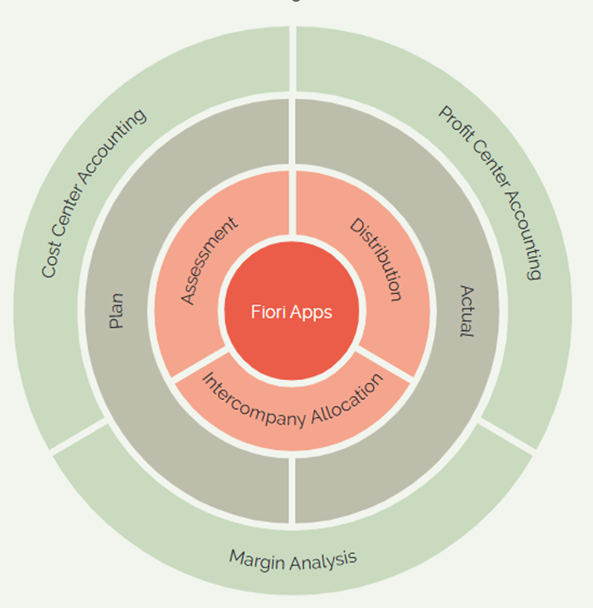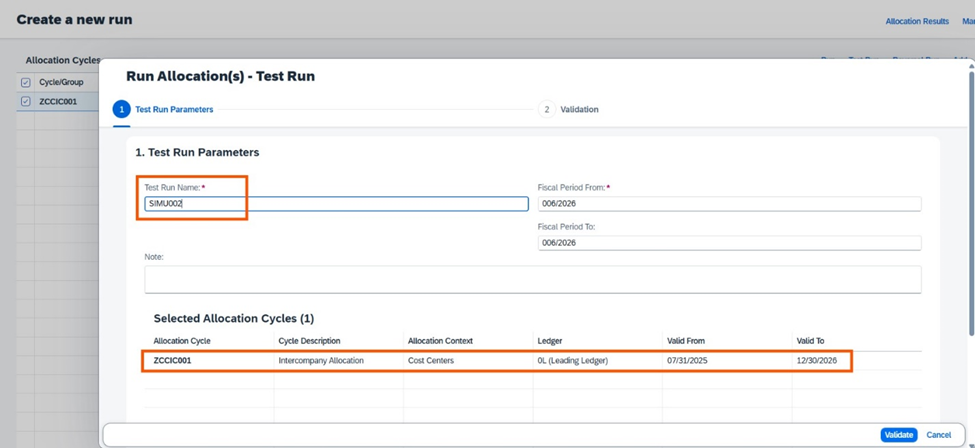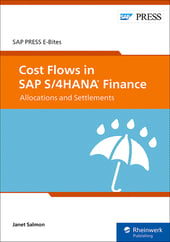Cost allocations have always been one of the most critical—yet often one of the most fragmented—processes within SAP Controlling (CO).
In the classic SAP ECC world, companies relied on multiple separate tools like cost center allocations (KSU1/KSV1), profit center allocations (3KE5/4KE5), and top-down distributions in CO-PA (KE28). With these, there is one transaction code for every function, such as create, change and display allocation cycle.
SAP introduced universal allocation as a single, harmonized framework into SAP S/4HANA that brings all the fragmented methods and transaction codes under one allocation engine. Instead of executing a separate transaction code for allocation cycle in each area like cost centers, profit centers, and profitability analysis, business users can create, change and display allocation cycles through one SAP Fiori app called Manage Allocations when using universal allocation.
Here is a look at how universal allocation combines everything.

Differences Between Classic Allocation and Universal Allocation
This chart lays out the key differences between the classic allocation model of SAP ERP and the new universal allocation model of SAP S/4HANA Finance.
| Classic Allocation | Universal Allocation |
| Multiple transaction codes | One SAP Fiori app |
| No versioning | Plan/forecast versions |
| Fragmented allocation | Unified allocation |
| Test run only | Full simulation |
| COEP/CO tables | ACDOCA (Universal Journal) |
| Limited trace | full transparency |
The main benefits of switching to universal allocation when using SAP S/4HANA are accessing a unified allocation framework, getting access to a powerful simulation mode, optimizing the Universal Journal, improving traceability, and providing intercompany allocations.
How to Migrate to Universal Allocation
To get universal allocation in your system, use the SAP Fiori app Schedule Overhead Accounting Jobs (F3767) and use the template Migrate Cycles to Universal Allocation; this will move allocation cycles into the universal allocation platform.
Key SAP Fiori Apps for Universal Allocation
Once you’ve enabled universal allocation in the system, you can utilize a number of different SAP Fiori apps:
- Manage Allocations: Allows you to create and edit allocation cycles and allocation segments.
- Run Allocations: Allows you to perform allocation runs.
- Allocation Results: Allows you to display the results of allocation runs.
- Allocation Flow: Allows you to display a visual flow of senders and receivers for an allocation and the respective debit and credit amounts.
- Manage Allocation Tags: Allows you to create and assign allocation tags to allocation cycles.
- Manage Cycle Run Groups: Allows you to organize allocation cycles into groups to enable parallel processing.
- Import Allocation Data - Values: Allows you to upload values to allocation segments.
Process Flow for Cost Allocations in Universal Allocation: From Cycle Creation to Execution
Let’s now discuss the process flow. Follow these instructions.
Use the SAP Fiori app Manage Allocation to view a list of your existing allocation cycles. Here you can edit, create, copy, or delete actual and plan allocation cycles.

Click on create.

![]()
To set the allocation context, select the area under which the allocation cycle is required. Available contexts are cost centers, profit centers, and margin analysis. Please note that costing-based profitability is not supported by universal allocation.

Depending on the allocation context you choose in universal allocation, different allocation types are available. The classic distribution cycle continues to exist, while the classic overhead allocation has been redefined as the assessment cycle. In addition, universal allocation introduces a new option: intercompany allocation.
We will create an intercompany allocation cycle in this post.
After entering all other self-explanatory information like validity, controlling area, description and actual/plan, click on create to move to the next section of creating an allocation cycle.

Field utility here is the same as in the classic allocation cycle.


In this example, the sending company is company code 1400.


The receiving company code is taken from the cost center.

Allocation cycle ZCCIC001 is then created. The allocation cycle is designed to send $1000 to two cost centers, $500 each, belonging to the different company codes.
Execute allocation cycle ZCCIC001. You can do this using the Manage Allocation or Run Allocations apps. Choose the allocation cycle and click on run.

The test run in universal allocation is not only a checkbox, but the full simulation mode that is saved into the system. Click on test run.

These details are stored to identify the simulation/test run.

Click on validate. SIMU002 is created with all the details of execution without updating financial records.




After executing an allocation cycle in universal allocation, the review information, such as senders, receivers, and journal entries, provides more detail and a modern, user-friendly display compared to classic allocations.
Below shows a list of all runs with their respective status that can be accessed via the Allocation Results app.

Conclusion
Universal allocation in SAP S/4HANA streamlines what was once a fragmented and complex process in SAP Controlling. By consolidating multiple allocation tools into one unified framework, it reduces administrative overhead, increases transparency, and provides richer insights through detailed reporting and simulation capabilities.
With intuitive SAP Fiori apps supporting the entire process (from cycle creation to execution and results analysis), finance and controlling teams can focus less on managing transactions and more on making informed business decisions. For organizations moving from SAP ECC to SAP S/4HANA, adopting universal allocation is not just a technical upgrade but a strategic step toward smarter, more efficient financial operations.




Comments